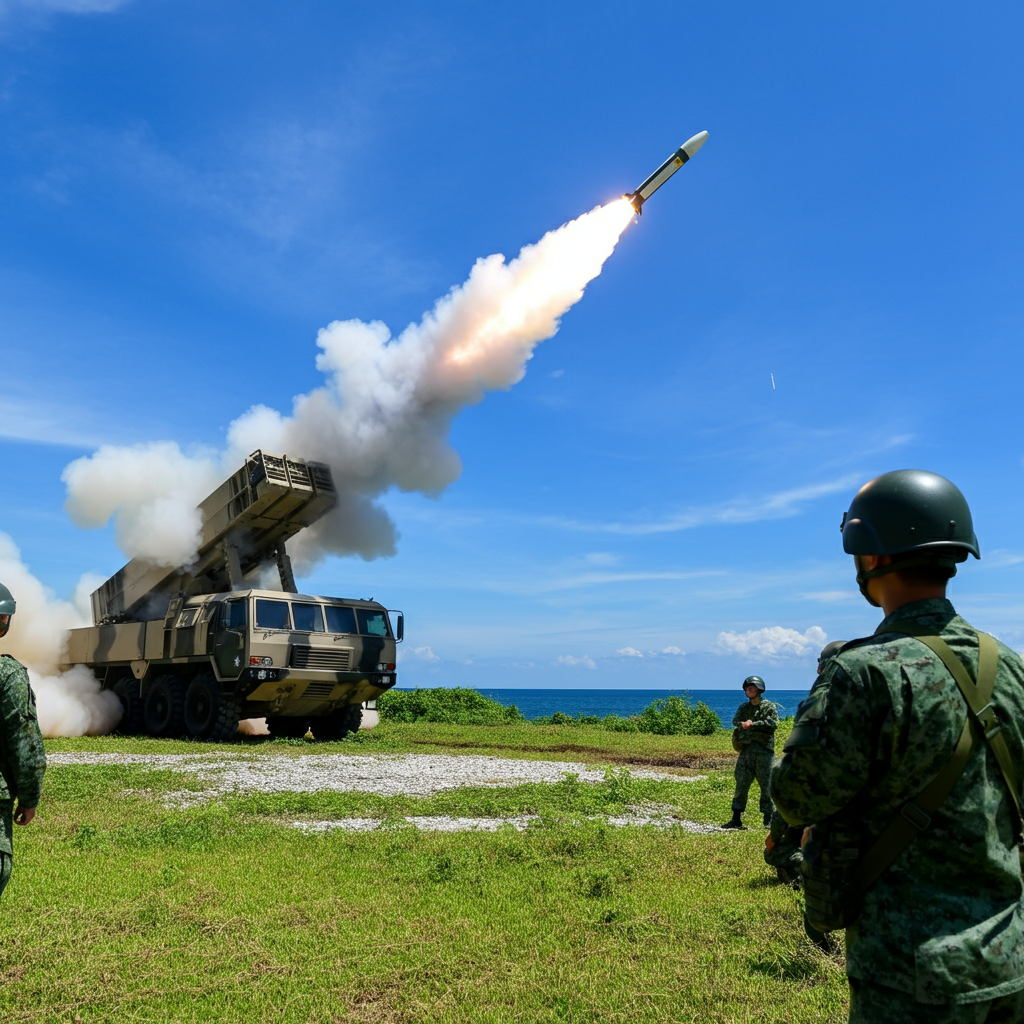On May 12, 2025, Taiwan successfully conducted a groundbreaking live-fire test of the High Mobility Artillery Rocket System (HIMARS), marking a critical milestone in its ongoing efforts to strengthen its defense capabilities amid escalating tensions with China. Supplied by the United States, this precision-strike weapon, already proven in global conflicts such as Ukraine, is set to reshape Taiwan’s military strategy and geopolitical leverage.
This blog explores the significance and implications of the HIMARS system for Taiwan-China relations and U.S. involvement.
Table of Contents
What is HIMARS?
HIMARS, short for High Mobility Artillery Rocket System, is a highly mobile, advanced weapon that delivers precision artillery strikes. Developed by Lockheed Martin, HIMARS can fire various munition types, including GPS-guided rockets ranging from approximately 300 kilometers (186 miles).
Key Capabilities:
- Precision Strikes: With GPS-guided rockets, HIMARS is renowned for its accuracy.
- Mobility: Mounted on a standard 5-ton truck, the system is designed for swift relocation, offering strategic flexibility.
- Proven Track Record: HIMARS is heavily relied on in global conflicts, including Ukraine’s war with Russia, where it has been used effectively for targeted strikes.
HIMARS is changing how nations approach modern warfare, and Taiwan’s acquisition marks a crucial step in countering potential external threats.
Taiwan’s Historic HIMARS Test Fire
The live-fire test occurred at the Jiupeng test base in Pingtung, along Taiwan’s Pacific coast. This event is part of Taiwan’s ongoing military modernization efforts, demonstrating its readiness to enhance its defense posture.
Key Details of the Test:
- Date & Location: Performed on May 12, 2025, at the Jiupeng test base in southern Taiwan.
- Participants: The test involved the Taiwanese military, with support from U.S. personnel and Lockheed Martin experts, to ensure operational success.
- Quote from Officials: Officer Ho Hsiang-yih expressed, “I believe this rocket firing shows our people’s determination to protect the country’s security and our beautiful homeland.”
The test’s success showcases Taiwan’s commitment to leveraging advanced defense systems, conveying its readiness to manage future challenges.
Implications for Taiwan-China Relations
The deployment of HIMARS represents a significant strategic shift in Taiwan’s defense, as tensions with China remain high. The weapon system’s range of 300 kilometers enables Taiwan to directly target sites along China’s coast, including provinces like Fujian, increasing its deterrence capabilities.
Potential Impact:
- Defensive Edge: HIMARS enhances Taiwan’s ability to counter incursions or naval threats, particularly in critical maritime zones.
- Geopolitical Leverage: The move could deter potential aggression from Beijing, showcasing Taiwan’s readiness to safeguard its sovereignty.
- Escalating Tensions: China’s recent “joint combat readiness patrols” and military drills near Taiwan highlight the geopolitical strain this development may further intensify.
Taiwan’s democratically elected government continues to reject China’s sovereignty claims, ensuring that its citizens’ wishes dictate the nation’s future.
The Role of the United States
The United States, despite lacking formal diplomatic ties with Taiwan, remains its primary arms supplier. The HIMARS acquisition is part of a broader U.S. strategy to bolster Taiwan’s defense capabilities, amid growing Chinese military assertiveness.
U.S. Contributions:
- Arms Transfers: Taiwan has purchased 29 HIMARS units from the U.S., with 11 already delivered and the remainder expected next year.
- Training Support: U.S. personnel train the Taiwanese military to operate HIMARS effectively.
- Strategic Partnership: The U.S. continues to deepen military cooperation with Taiwan, reaffirming its commitment to stability in the Indo-Pacific region.
This partnership strengthens Taiwan’s defense workforce and reinforces a message of shared values between the U.S. and Taiwan.
The Broader Geopolitical Context
China’s aggressive military posturing—including increased war games, naval movements, and air force exercises near Taiwan—is a constant reminder of its sovereignty claims over the island. This dynamic fuels Taiwan’s pursuit of advanced defense systems like HIMARS.
Taiwan’s Stance:
Taiwan’s government firmly believes in the right of its citizens to determine the country’s future. This democratic stance starkly contrasts with Beijing’s claims, positioning Taiwan as a symbol of resilience and sovereignty in global politics.
Strengthening Taiwan’s Defense Capabilities
The HIMARS test fire marks a critical step in Taiwan’s defense evolution. Its ability to implement cutting-edge technologies sends a message to adversaries that Taiwan is willing and equipped to protect its sovereignty.
This development highlights advanced military technologies for nations watching from the sidelines in maintaining peace and balance in geopolitically sensitive regions.
FAQs about HIMARS and Taiwan’s Defense
1. What is the range of HIMARS?
HIMARS has a maximum range of approximately 300 kilometers (186 miles), enabling it to strike targets with high precision.
2. Why is HIMARS significant for Taiwan?
HIMARS allows Taiwan to target strategic coastal locations in China, enhancing its defense capabilities against potential invasions.
3. How many HIMARS units has Taiwan purchased?
Taiwan has bought 29 HIMARS units, with 11 deployed and 18 expected by next year.
4. How does HIMARS compare to other artillery systems?
HIMARS is considered one of the most advanced mobile artillery systems due to its precision, mobility, and versatility.
5. Why does the U.S. support Taiwan militarily?
The U.S. aims to maintain peace and stability in the Indo-Pacific region. Supporting Taiwan’s defense aligns with this goal, despite the lack of formal diplomatic ties.

